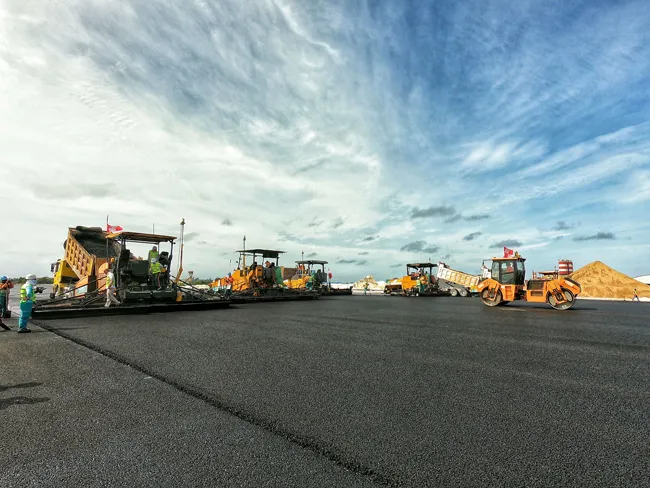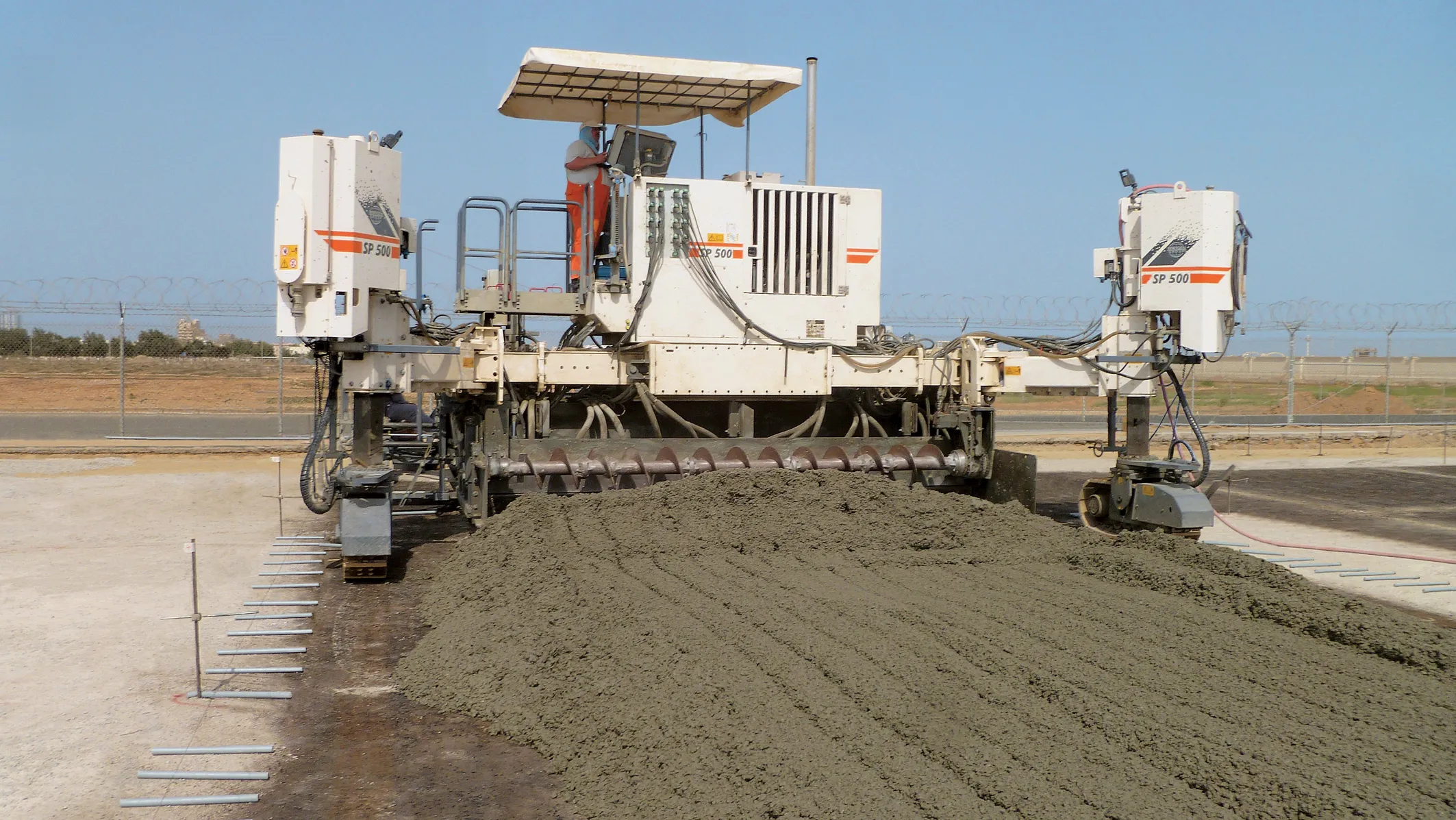
In 2016 the Chinese firm Beijing Urban Construction Group (BUCG) was awarded the contract for the expansion of the Ibrahim Nasir International Airport on Hulhule island in the Maldives, which is part of the Indian Ocean island group. The massive US$440 million expansion and land reclamation work is intended to boost capacity at the Maldives Airport. BUCG has utilised
Several Trimble office software solutions were installed: Trimble Business Center- HCE, Trimble Connect, VisionLink, SketchUp Pro, Vico Office. Field solutions include: Trimble SPS985, Trimble GCS900, Trimble CCS900, and Trimble PCS900 as well as Trimble NetRS GPS base station receivers, Trimble 4D control monitoring software and the TX8 for 3D scanning.
The airport upgrade includes a new 3.8km-long and 65m-wide runway, a fuel farm, a cargo complex and a new terminal. The new runway will also allow the Airbus A380 jetliner, the world’s largest passenger airliner, to use the airport. The fuel farm, or fuelling area for the planes, will have a storage capacity of 44.67 million litres and a cargo complex with the capacity to handle 108,000tonnes. In addition to requiring mass excavation, fine grading and precise runway paving and compaction, the Maldives Airport expansion has required extensive land reclamation work.
To complete the runway, 4 million m3 of sand has had to be removed from the inner lagoon adjacent to airport, which was also dredged in 2012 during a previous expansion.
Revetment work has been carried out to absorb the energy of incoming water, using asphalt and sandbags with a geotextile filter. BUCG hired several subcontractors for the dredge work and to complete the gas and utility lines for the fuel farm, and a Building Information Modeling (BIM) consultant was hired to create a BIM implementation plan.
Facing tight parameters on this project and looking to streamline data flow and communication across the build, team leaders at BUCG reached out to Trimble and MAG Science & Technology Co. After completing a site consultation and a detailed recommendations report, BUCG implemented several Trimble office software and field solutions.
Trimble technology partners from Germany, Australia and Shanghai also supported the implementation and training efforts with MAG supported on-site installations and services.
General manager from MAG Building Division, Guan Shuan explained that implementing Trimble Connect allowed for a more integrated data workflow across the jobsite. Trimble Connect is a cloud-based platform that powers information and data exchange between owners, architects, subcontractors, engineers and trades that traditionally leverage different software and hardware tools. This provided a centralised database for project information, with drawings and 3D models in the same location for access by all site personnel.
The team has used Vico Office to generate 4D schedules and estimates directly from 3D models, which are also uploaded to the cloud through Trimble Connect.
The team hit a milestone in August 2017 when it completed the asphalt paving on the original Maldives Airport runway. Asphalt paving took three months from start to finish, with four pavers, each running the Trimble PCS900 Paving Control System and leveraging the Trimble SPS930 Universal Total Station for positioning. The elevation models were created digitally in Business Center-HCE and referenced by the PCS900 system during both milling and paving.
With the 3D paving control system, one surveyor on the ground was able to manage three pavers, as opposed to conventional methods where two or three surveyors were needed for each paver. Meanwhile, 12 rollers followed the four pavers, with six using the Trimble CCS900 Compaction Control System. Each compactor also included a wireless modem connecting to a fleet management system called VisonLink from Trimble. Information such as pass counts,
temperatures and compaction meter values were captured, as well as data about material layers. This real-time information was accessible by crew leaders on site and in the office. The real-time data was used to make recommendations and adjustments to compaction.
With this information, the BUCG team was able to reduce over compaction, optimise fuel use and machine runtime, and ensure consistent compaction pass counts and meter values. This was important as the reclaimed ground in Maldives can have soft spots that require additional compaction. Using VisionLink, subcontractors had the documentation to demonstrate they were hitting tolerances and that their compaction rates were in parallel with the design.
The new runway has been built around 200m from the original runway, adding scheduling restraints and putting an increased emphasis on safety and efficiency. Paving work had to be carried out between 1am and 5am, when flights were not running.
However, the technology meant that the four pavers and associated compactors could all be used efficiently in this period. The pavers could operate in echelon and without need for string lines.
For bulk earthworks and then fine grading work, the team also used the Trimble GCS900 Grade Control System on one dozer, one excavator and one motor grader. For grading work, the team was able to train a compactor operator to use the GCS900 system on a motor grader effectively in a short amount of time. The GCS900 system was also used on the excavator extensively to lay communication lines, oil pipelines and other critical utilities.
According to the contractor, using the GCS900 system meant that there was no need to have personnel in the water to take measurements and monitor where digging was being carried out. This boosted safety as the machine operators could watch their screens and dig efficiently in accordance with the design.









